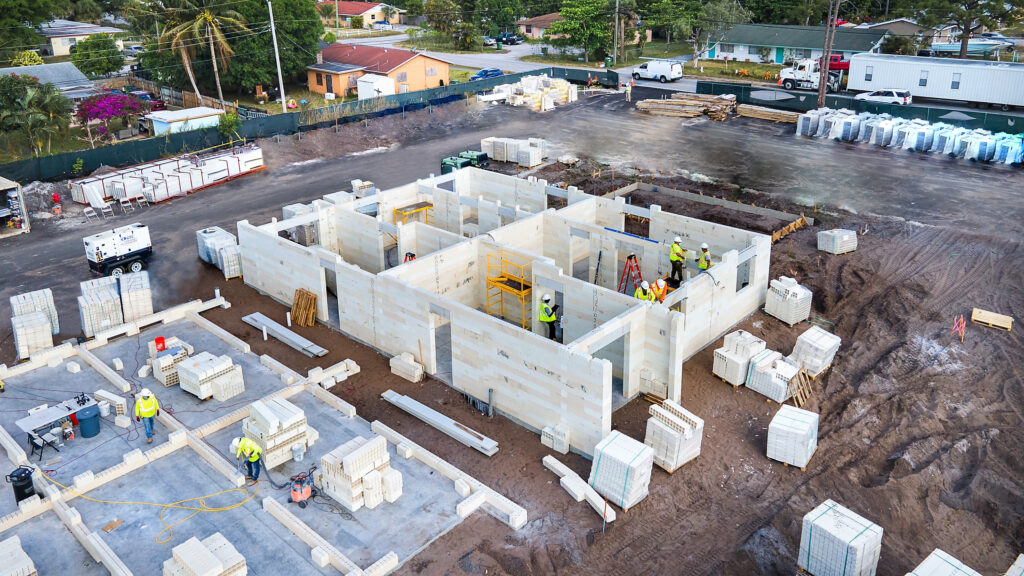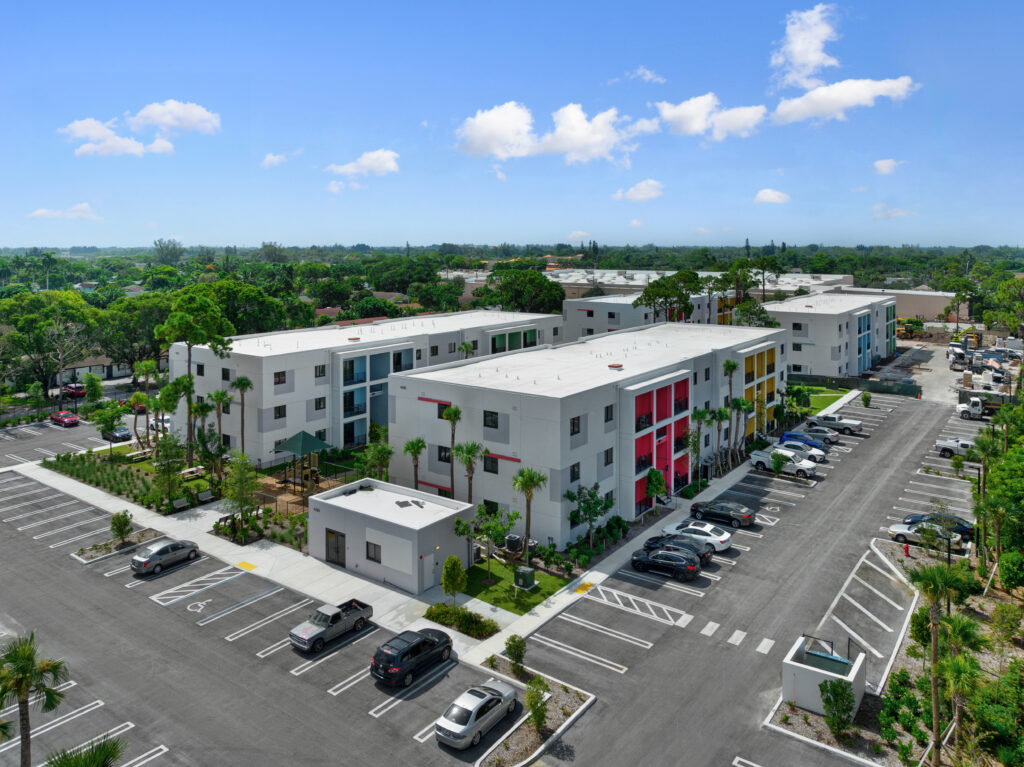By Morgann Rhule, The Invading Sea
Lego blocks aren’t just for kids.
At least that’s what Engin Yesil, co-founder of Renco, thought while watching his children build intricate structures with the plastic toy.
This simple concept of interlocking pieces inspired Renco’s breakthrough in construction: an innovative system of molded composite blocks that snap together like Lego bricks to form stronger, more sustainable buildings.

After more than a decade of research and development, Renco offers an environmentally friendly, cost-effective and durable alternative to traditional building materials like concrete and steel.
Renco stands for Renewable Composite. Unlike traditional building methods that rely heavily on high-carbon materials, Renco blocks are made from a blend of repurposed materials such as PET resin, a recyclable material found in plastic bottles; repurposed fiberglass, sourced from Turkey’s boat-building industry; and calcium carbonate, a naturally occurring limestone that enhances strength. This material is strong enough to withstand a Category 5 hurricane.
According to Kenneth Smuts, president of Renco, the environmental aspect was a “natural happenstance” of the company’s efforts to be more sustainable.
“There was an author that came out and said that the greenest building is a building that you don’t have to rebuild. So, if this thing lasts twice as long, three times as long, you’re saving all of that energy and carbon emissions,” Smuts said.
This longevity is key to Renco’s environmental impact. Traditional buildings often require major renovations or reconstruction within a few decades, consuming more resources and generating additional emissions. Renco structures are designed to last two to three times longer, drastically reducing the need for rebuilding and the associated carbon footprint.
Renco’s LEGO-like structures can also be assembled more quickly than traditional construction, which can take months or even years due to material shortages and labor delays.
In Palm Springs, Florida, Renco’s first U.S. apartment complex was built with just 11 unskilled workers in eight weeks — a fraction of the time it would have taken using traditional methods. Since it only takes two hours to train someone to build with Renco, labor shortages are less of a barrier to rapid construction.
“The best bonus is that we’re providing something that can be built faster and for less money, but it’s also green,” said Smuts, emphasizing that while sustainability is a core benefit, efficiency and cost savings are what attract most developers.
Renco’s pre-manufactured building system cuts down construction waste, which is a major environmental problem. Each structure is assembled like a kit, and no cutting, welding, grinding or burning is required on site.
“That means fewer dumpsters and less construction waste; there’s virtually none,” Smuts said.

Beyond reducing waste, Renco dramatically lowers the carbon footprint of construction. Renco’s material has 82% less embodied carbon than structural steel and 62% less embodied carbon than reinforced concrete, according to research by the Athena Sustainable Materials Institute.
Cement, the core component of concrete, accounts for 8% of global carbon emissions, a larger share than the entire airline industry. While most modern structures still require a concrete foundation, Renco eliminates the need for concrete above the foundation.
Smuts compares Renco’s compression molding process to making pancakes: Instead of mixing eggs and milk, you combine resin with a catalyst. Instead of adding flour, sugar and salt, you incorporate calcite, fire retardants and mold release agents.
The final mixture has a consistency similar to pancake batter. This mixture of PET resin, fiber glass and calcium carbonate is then compressed into ultra-strong molded blocks that interlock to form entire buildings.
This combination creates a lightweight yet robust material that significantly reduces energy consumption during transportation and construction. A single truckload of Renco blocks replaces four truckloads of traditional concrete blocks, according to the company, cutting fuel use and emissions.
While Renco’s composite blocks are manufactured in Manisa, Turkey, the company is expanding its presence in the U.S. Earlier this year, Renco opened its first American factory in Jupiter, Florida, capable of producing enough materials to build 9,000 homes or apartment units annually.
This expansion will make Renco products more accessible across North America. Smuts believes this will further advance sustainable construction efforts, influencing global efforts to reduce the carbon footprint of construction.
“Everything’s cyclical. But people are smart ” Smuts said. “They understand that if it takes so much energy — which is time and money at the end of the day — to develop products, and you have something that lasts much longer than conventional products, I think it’s natural that people will accept it. It’s going to be the way of the world.”
Morgann Rhule is a senior majoring in multimedia journalism at Florida Atlantic University who is reporting for The Invading Sea during the spring 2025 semester. Banner photo: Another image of Lakewood Village being built (Photo courtesy of Renco USA).
Sign up for The Invading Sea newsletter by visiting here. To support The Invading Sea, click here to make a donation. If you are interested in submitting an opinion piece to The Invading Sea, email Editor Nathan Crabbe at ncrabbe@fau.edu.



